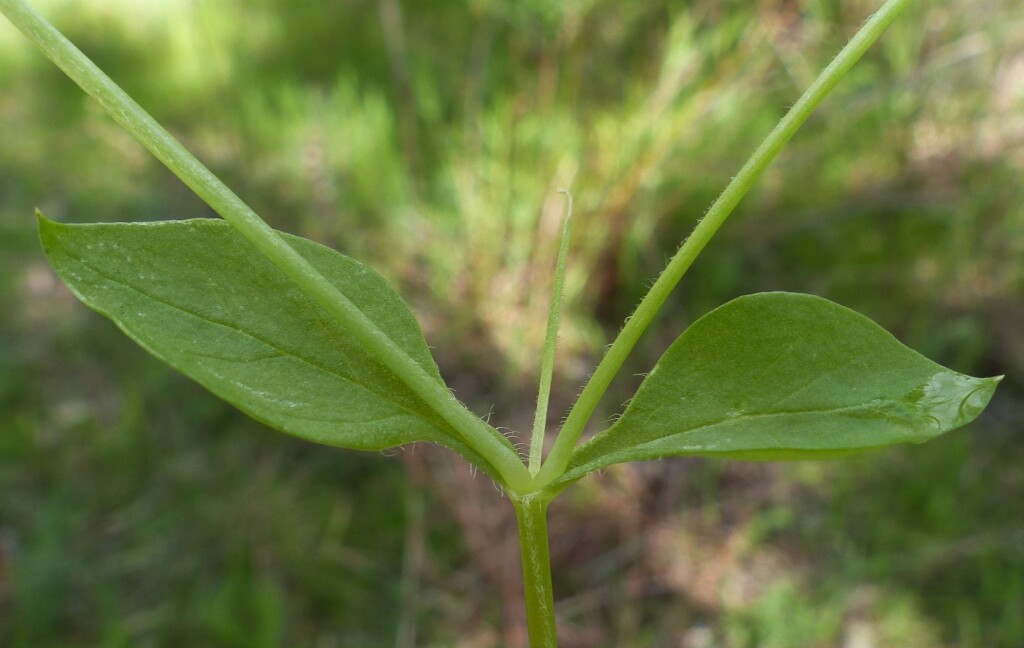Stellaria pallida
(Dumort.) Crep. Lesser ChickweedAnnual herb; stems slender, semi-prostrate to erect, to 40 cm long, usually with single line of white multicellular hairs on one side of internode (also along pedicel), rarely glabrous. Leaves usually all petiolate, cordate, spathulate or ovate, (6–)10–20 mm long, (2–)4–8.5 mm wide, margin entire or sparsely ciliate near base. Inflorescence a terminal, leafy monochasium; fruiting pedicel erect, occasionally recurved, (2–)5–10(–13) mm long; sepals 2–4(–4.5) mm long, with white hairs all over or on base only, rarely glabrous, apex obtuse to hooded, margin narrow, scarious to membranous; petals absent; stamens 1–3. Capsule (2–)3–4(–4.5) mm long, 1–2 mm diam., shortly exceeding sepals; valves straight or slightly recurved at apex; seeds 6–20, 0.5–1 mm long, yellowish to mid-tan, rarely dark brown, tubercles medium to small, rounded and narrow. Flowers Aug.–Dec.
LoM, MuM, Wim, GleP, Brid, VVP, VRiv, MSB, RobP, MuF, GipP, OtP, WaP, Gold, CVU, GGr, DunT, NIS, EGL, EGU, WPro, HSF, HNF, Strz, VAlp. Also naturalised WA, NT, SA, NSW, NI, Tas. Native to Europe. A weed of disturbed areas such as roadsides, camping grounds and riverbanks.
Stellaria pallida (Dumort.) Crép. is sometimes treated as a synonym of Stellaria apetala Ucria, e.g. in Plants of the World Online (13 March 2025).
Miller, C.H.; West, J.G. (1996). Stellaria. In: Walsh, N.G.; Entwisle, T.J., Flora of Victoria Vol. 3, Dicotyledons Winteraceae to Myrtaceae, pp. 233–240. Inkata Press, Melbourne.
 Spinning
Spinning




